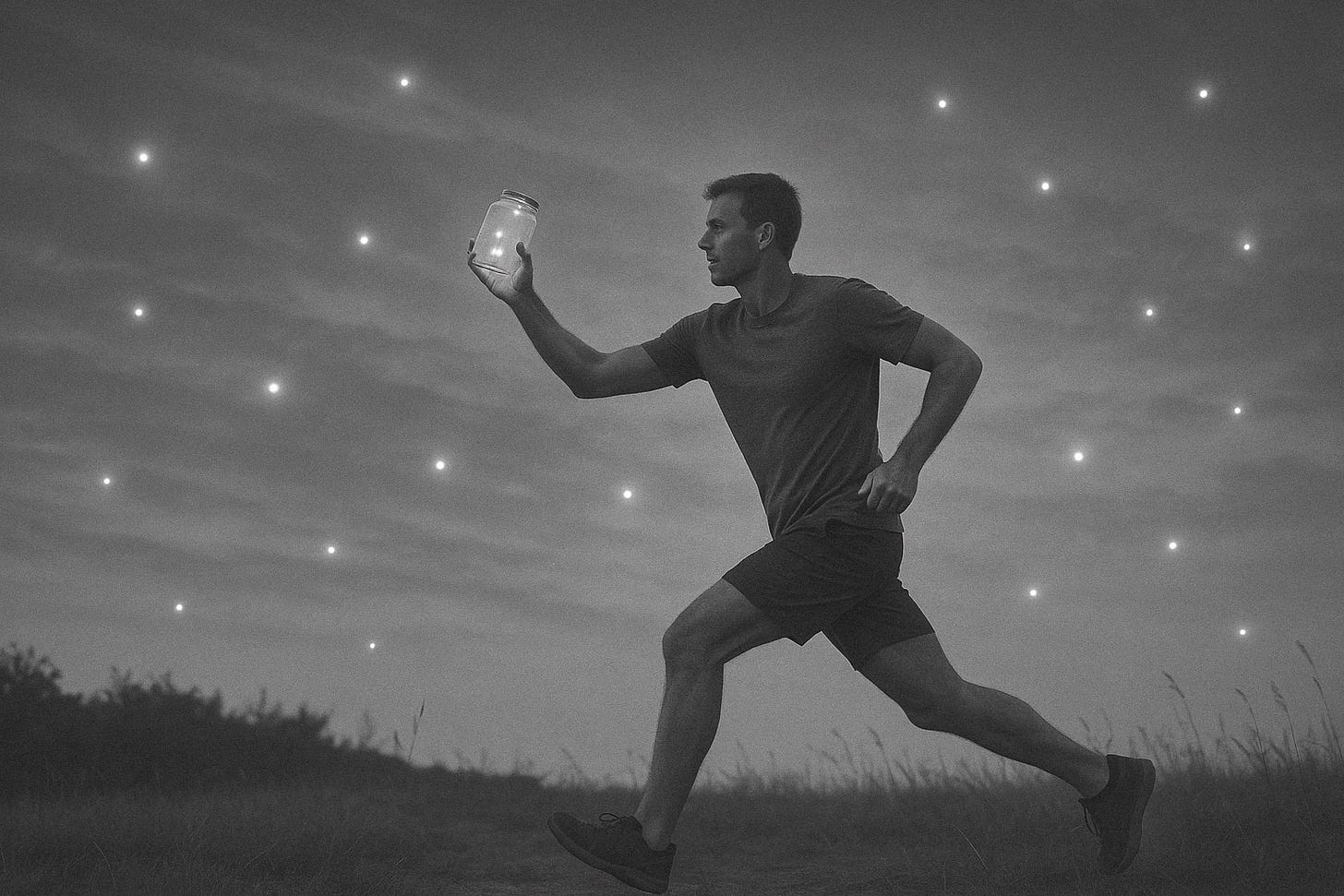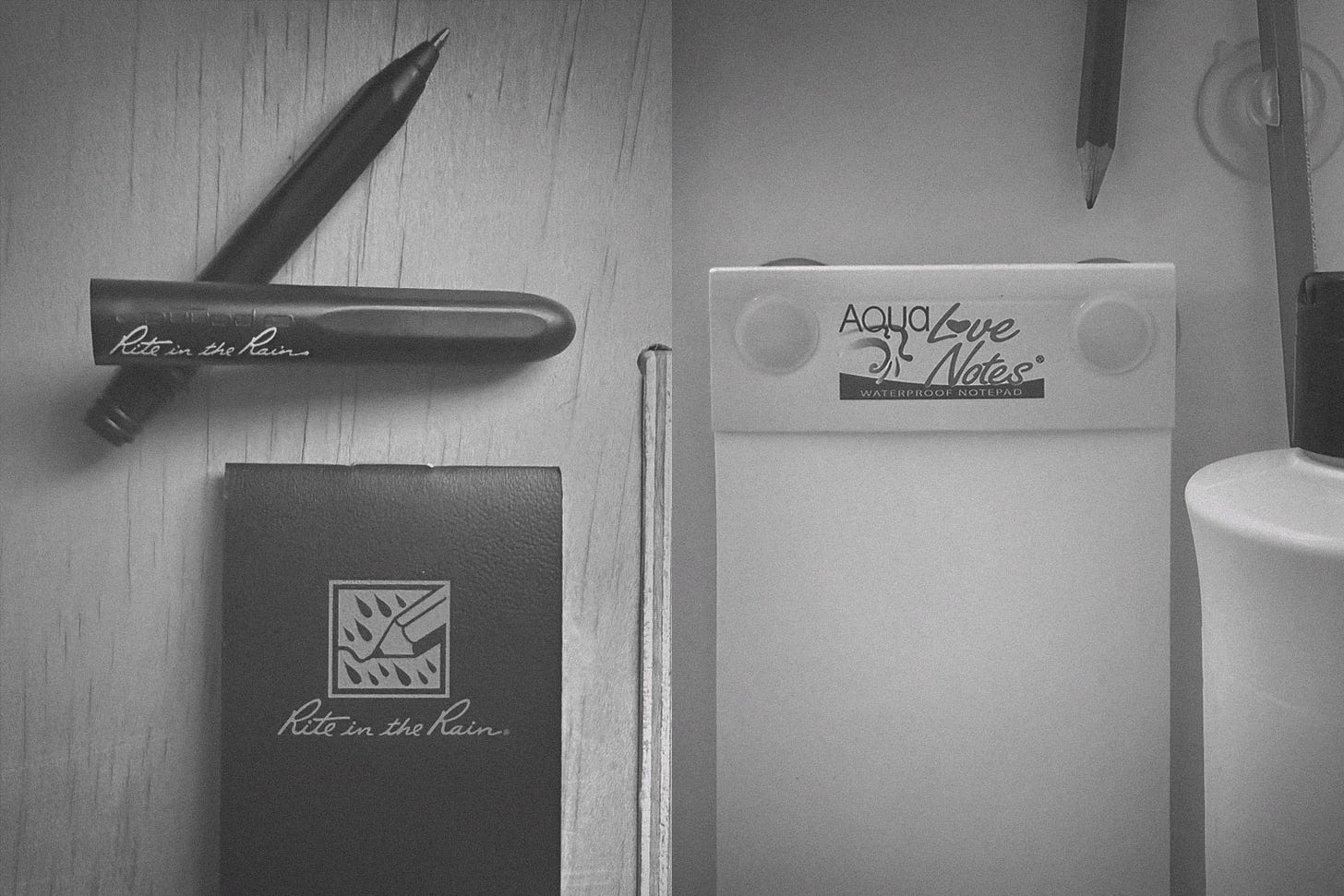When Ideas Arrive on the Run
Why Inspiration Sometimes Strikes Unexpectedly (and How to Catch It)
Ideas swirl around, searching for available and willing human partners. When an idea thinks it has found somebody—say, you—who might be able to bring it into the world, it will try to get your attention. But, if it realizes you’re oblivious, it will move on to someone else.
—Elizabeth Gilbert, Big Magic
I’m up at 4:30 am, tapping notes for this article—swiftly because inspiration has struck, but softly so as not to wake my wife. There are a few places where ideas are more apt to show up for me: In bed at 4:30 am, in the shower, and on a run. The idea I’m writing about now has been swirling around for two days. If I don’t snatch it, Elizabeth Gilbert warns, it will find someone else.
We are all visited occasionally by insights and revelations. Carl Jung believed people don’t engineer creativity so much as channel it. “Art is a kind of innate drive that seizes a human being and makes them its instrument,” he wrote.
Whether it blows by on the wind, or—as Jung would suggest—our connection to the collective unconscious supplies it from within, one truth is universal: inspiration will arrive on its own schedule, often at inconvenient times.
It’s thrilling when an idea hits like a bolt of lightning … and maddening when it slips through our fingers. So, how do we catch these elusive fireflies?
Science and Magic
See if you’ve experienced this scenario: You’re straining to solve a problem. You focus intently, but nothing comes. Frustrated, you break for a walk, and that’s when the solution arrives. What is happening here?
When we’re active but not focused on an effortful task—say, shampooing our hair or out for a run—the brain’s default mode network lights up. It connects dots, taps a well of memories, emotions, and stray thoughts, then builds links between.
In running, this associative state arrives on the Fourth Wind, a loose and playful phase of effortless action, also described by the Taoist concept of Wu Wei. Here, our monkey minds get quiet. A wonderfully light “not-trying” comes to the fore.
In The War of Art, Steven Pressfield describes a benevolent force that delivers inspiration. In his characterization, “the muse” usually finds us hard at work. “She is always watching,” he writes, “watching to see if we’re ready.”
But there’s another muse.
This one ignores office hours and arrives wild and barefoot, bounding alongside us in the middle of our Sunday long run before vanishing in mystery. This is the muse of not-trying and not-thinking. Ray Bradbury says, “Thinking is the enemy of creativity. You can’t try to do things. You simply must do things.”
Catching Pressfield’s muse is easy because we are already sitting at our desks. To be ready for Bradbury’s free-spirited muse, paradoxically, we must plan.
Being Ready
Years ago, I had a boss who was a creative tornado. He would whirl through the office like a Tasmanian Devil, spinning off ideas and half-considered action items, leaving people dazed and disheveled. Then, someone who’d been around a while said, “Don’t do anything until you hear it three times.”
When inspiration strikes at inopportune moments, we can take a similar tack. “If it is meant to be, it will come back,” we console ourselves. But such passivity is hard for linear thinking type-A’s. We want to act. When an idea seeks a human collaborator, we want to be that human.
As a professional creative of two decades, I’ve been around that block. Here are a half-dozen tactics to help you hold onto slippery epiphanies.
Speak it. Say out loud, “I am going to remember this.” This brief moment of conscious awareness strengthens encoding of the memory and increases the chances you’ll be able to retrieve it.
Associate. When an idea drops, stop running. Take a breath and look around. What do you see, hear, and smell? Notice the details. Later, recalling the entire sensory experience will help bring back your idea.
Visualize. Imagine plucking your mid-run revelation from the air and putting it in your pocket. Check on it occasionally to make sure it’s still there.
Scribble. When I remember, I carry a small waterproof notebook and pen. On a trip to Hawaii, I used them to sketch, and can still call back details—my mood, the weather, the ground under my feet. Phone pics don’t seem to work like that. We keep a waterproof notepad in the shower, too.
Write. Try a post-run debrief. You can type or use voice memos, but consider writing by hand in an unstructured, free-flowing way. The cognitive offloading makes space for inspiration to emerge (or re-emerge).
Okay, fine. Use the tech. If you have your phone with you, no brilliant idea can escape. Voice and notes apps are foolproof. Even the ones on our running watches (while clunky) will let you jot down an associative word or phrase.
The Finish Line
Inspiration doesn’t always arrive on cue. Often, it appears in a flash and is gone just as fast. With practice, we can learn to notice these mystical visitations, and with a little foresight, have our jars open and ready to catch the light.
Seizing upon ideas in the wild is a thrill. But what if we could create the conditions that encourage their arrival? In Part 2, we will explore how to cultivate a running practice that is fertile ground for creativity and insight. Until then…
Run lightly,
-mike
I am taking next week off to celebrate my stepdad’s 80th. Our kids will be home and we just can’t wait! Please watch for the next newsletter the week of April 28th.
Enjoy what you read here? Become a paid subscriber for just $1 a week.







LOVE the visualization of putting it my pocket. Definitely going to be using that one in the future... Also love the Big Magic reference. SO GOOD.
I very much agree and relate with this post! In fact, my Substack is named Born on the Trail for this very reason. - it's a collection of the ideas and discussions I have with myself when running on trails. Since it would be hard to carry a pen and paper, I just use a voice app on my phone to record my thoughts and it gets automatically converted into text, which I can then use when I am back home.
Good article!